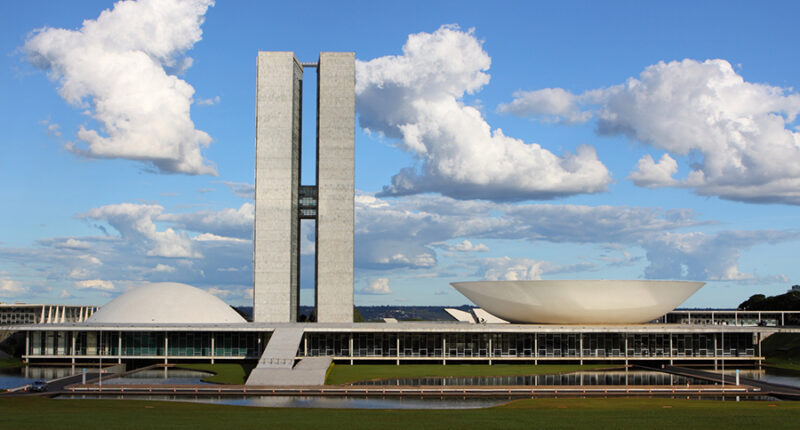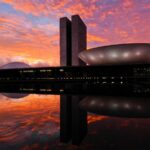Architectural Legacy in the Heart of Brazil
The National Congress, a monumental structure designed by the legendary architect Oscar Niemeyer, stands as a testament to Brasília’s visionary city planning. Situated within the central greensward of Brasília’s eastern arm, the National Congress holds a distinguished position among Niemeyer’s government buildings, reflecting the fusion of Le Corbusier’s influence with Niemeyer’s distinctive Brazilian Modernism.
![]()
A Visionary Capital City
The genesis of Brasília, Brazil’s purpose-built capital, traces back to the country’s quest for independence and subsequent Republican aspirations. However, it wasn’t until Juscelino Kubitschek’s presidency in 1956 that Brasília’s development gained momentum. Tasked with overseeing Brasília’s construction, Niemeyer wielded considerable influence, shaping the city’s architectural identity with bold creativity and rapid implementation.
Embodying Architectural Dialogue
Niemeyer’s National Congress embodies a dialogue between spirituality and secularism, a hallmark of Brasília’s urban design. The building’s iconic cupolas, symbolizing the bicameral legislature, reflect architectural motifs reminiscent of global seats of power. Notably, the inverted dome of the Chamber of Deputies offers a distinctive aesthetic, infusing the structure with symbolic significance and architectural innovation.
![]()
Integration with Urban Landscape
Central to Niemeyer’s design philosophy was the seamless integration of the National Congress with Brasília’s urban fabric. The building’s raised plinth aligns with the Monumental Axis, harmonizing with Lúcio Costa’s city plan. Triangular extensions from the roof elegantly converge with the surrounding roadways, accentuating the building’s monumental presence within the cityscape.
A Legacy of Controversy and Resilience
Brasília’s inauguration in 1960 marked a milestone in Brazilian history, yet its utopian vision faced skepticism and criticism. Over the years, perceptions of Brasília evolved, with UNESCO recognizing its architectural significance in 1987. Despite political upheavals and shifting public sentiments, Brasília endures as a symbol of architectural prowess and civic pride.
![]()
Reclaiming Public Space
In recent years, Brasília’s public spaces have witnessed a resurgence of civic engagement. Protesters have utilized the National Congress’s plaza, echoing Niemeyer’s original vision of communal gathering. This resurgence reflects Brasília’s evolving identity, where history, memory, and civic activism converge in a dynamic urban landscape.
Oscar Niemeyer’s National Congress stands as more than an architectural marvel; it is a symbol of Brasília’s enduring legacy—a testament to Brazil’s aspirations and the spirit of its people.



















